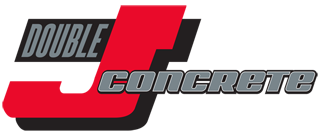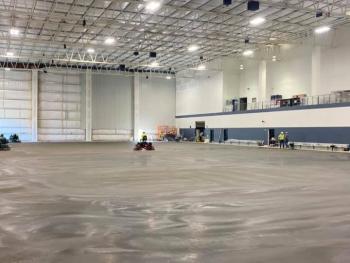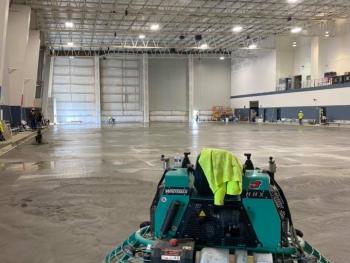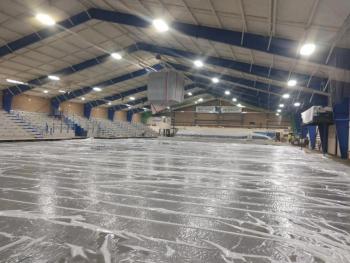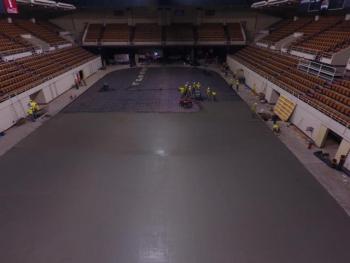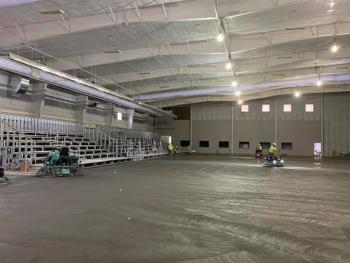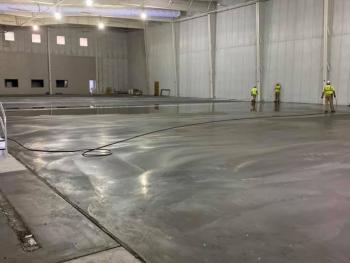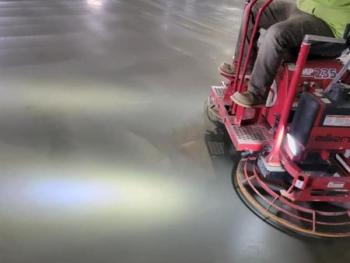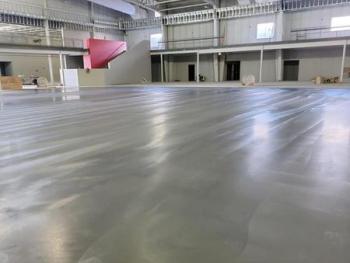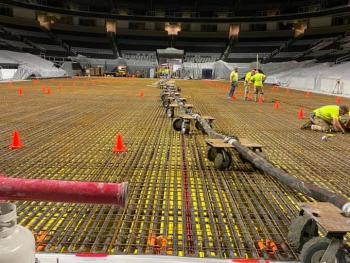Ice Arena Concrete Floors
Ice rink slabs hold several challenges for contractors. Cooling lines within the slab mean contractors can't drive heavy equipment over the jobsite during placing and strikeoff processes. Contractors also have to avoid placing tools with jagged edges to prevent the potential of puncturing the cooling lines. Ice rink slabs demand tight floor flatness and floor levelness specifications due to the importance of a flat ice surface. Deviations in the flatness of the concrete will be reflected on the ice surface and can affect the people skating on the ice.
Once pumped, the perimeter edge was vibrated with a small pencil vibrator. Then a Somero PowerRake is used to level the concrete to within a ¼ inch of the final elevation. Then crew passes over the slab with a Somero CopperHead laser-guided screed to achieve the final grade.
After screeding, the slab was floated with a 12-foot bullfloat followed by a 12-foot highway straightedge. The process was repeated until the slab reached the specified flatness. Floor tolerance of ice rinks is very critical with no room for error. Most ice rinks will require either a 1/8-inch in 10-foot flatness requirement or overall F-numbers of FF 30, FL 25. We always meet the specified tolerances and normally exceed them substantially.
